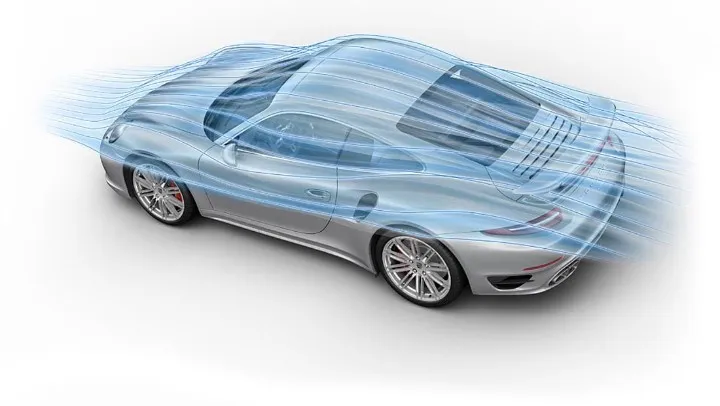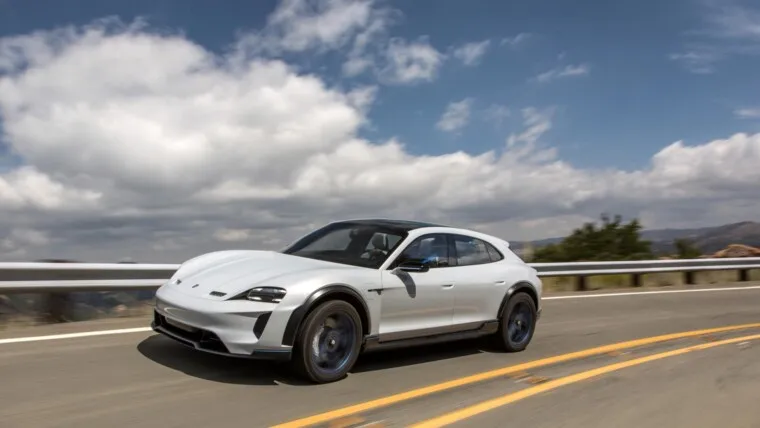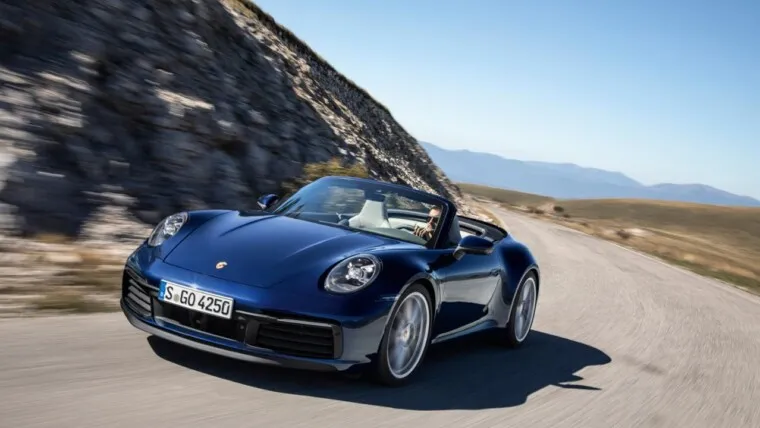Throughout its 50 years of development, the basic form of the Porsche 911 has been a perfect aerodynamic example of the latter. At the same time, the 911 provides an impressive lesson on how it is possible to continue to aerodynamically refine a car’s basic form without losing key aspects of its distinctive design and brand recognition.
The aerodynamic contour of the Porsche 911 stems from the 1950s and is a legacy of the Porsche 356. In those days, attempts were made to adopt and develop streamlined forms from aviation. The role model for the contour of the original Porsche was a teardrop profile of a cross-section of an aircraft wing. The advantages of this form: It reduces drag, and high driving speeds can be achieved even at low engine output – a basic Porsche principle. This also provided the foundation for success in motor sports. Because Porsche sports cars have also always been designed for motor sports, the brand’s classical testing grounds. Reduced power output means reduced energy consumption. Outstanding efficiency has always been an essential trait of the 911.
However, flow dynamics around the basic form of a 911 are not always advantageous. A basic disadvantage of a sports car with a streamlined chassis is the “lift-off effect” (aerodynamic lift) at the front and rear axles – which is required in aircraft, but not in automobiles. It is especially detrimental, since lift forces increase exponentially with vehicle speed: Doubling vehicle speed quadruples the force of aerodynamic lift. From about 80 km/h, air is the dominating drag force that counters all further acceleration and needs to be overcome with engine power.
Long rear section for low air drag
The flow dynamics of any given basic form produces both drag and lift forces. In order to reduce their effects, the flow dynamics must be modified in specific ways with the help of aerodynamic add-on parts. A legendary example was provided by Porsche in the early 1970s in the form of the 917 racing car, which was equipped with an extra long chassis for high speed tracks – the famous long-tail racing car with particularly low air drag for Le Mans.
Based on this experience, Porsche equipped the 911 S with the first front spoiler in 1971. It accelerated the air flow underneath the vehicle, diverted some of the air around the sides and therefore reduced aerodynamic lift of the vehicle’s front section. The advantages were improved directional stability and easier controllability. The Carrera RS 2.7, designed for motor sports in 1972, brought a milestone in aerodynamic development to the market: Not only was it equipped with a low-slung front spoiler, but also with a distinctive spoiler over the bonnet – the legendary “ducktail”. Both add-on components improved airflow around the 911 and reduced aerodynamic lift and drag. The result: The Carrera RS 2.7 was particularly fast and efficient, while also offering excellent road-handling characteristics at high speeds. One year later, the prototype of the first 911 Turbo further intensified on-going aerodynamic development of the 911 chassis with a large, fixed rear spoiler.
Treadmill ground simulation in the wind tunnel
Porsche has continued to improve the aerodynamics of the 911 and reduce its air drag and lift from generation to generation. Driving performance increased while fuel consumption was reduced. The cladding of the undercarriage became increasingly smoother. All air flows used for brake and engine cooling are aerodynamically optimised, which results in a particularly efficient design.
In this area, Porsche focuses on state-of-the-art development tools. Simulations are initially used to test the effects of aerodynamically relevant designs on airflow through and around the vehicle. To optimise cooling requirements, the simulation also includes heat sources such as the engine, transmission, exhaust system and brakes. Aerodynamics engineers can also access a wind tunnel equipped with a highly accurate weight scale and a moving belt ground simulator. The weight scale permits exact measurement of how lift or downforce affect axle loads as a function of speed. The moving belt simulates the road and can run underneath the vehicle at speeds of up to 300 km/h to simulate the relative motion between the car and the road as realistically as possible.
The importance of aerodynamics continued to grow with increases in road performance and the brand’s standard for continual performance improvement. In the late 1980s, Porsche developed an extendable rear spoiler for the 964 to combine the indispensable effect of vehicle bypass flows with the demands on the typical Porsche design. This completed the first step towards adaptive aerodynamics.







